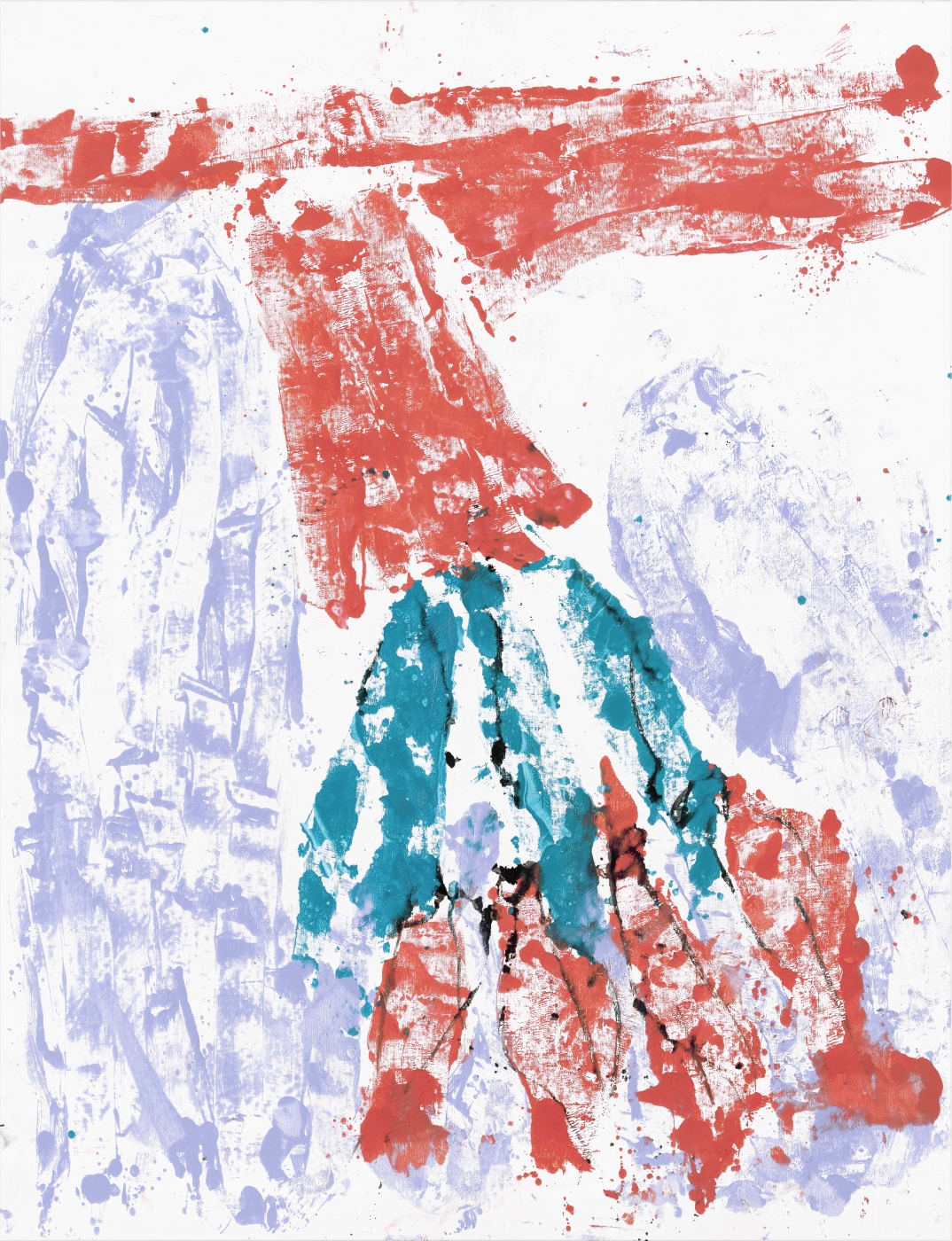I am no longer a painter in the old sense; not for a long time. I am rather someone who realises dreams or I present myself as a painter in love with art history. — Georg Baselitz
In celebration of the artist’s 85th birthday, the exhibition brings together five series realised between 2020 and 2021, spanning Tulips with pared-back compositions and contrasting colours, three series of portraits with vivid palettes, and a series of more melancholy portraits on dark backgrounds.
Baselitz’s recent works are characterised by an unprecedented integration of fabric and by a transfer method that marks a significant recent development in the artist’s technique. The result is a distinctive universe where, both conceptually and materially, the logic of collage coalesces with painting.

Throughout the paintings on view in the exhibition, the artist deploys the monotype printing technique that has become characteristic of his practice in recent years. He paints the composition onto a piece of unstretched canvas before pressing a second canvas against it while wet, to create a mirror-image impression.
Is nee muss nee, 2020
Oil on canvas
300 x 250 cm (118.11 x 98.43 in)
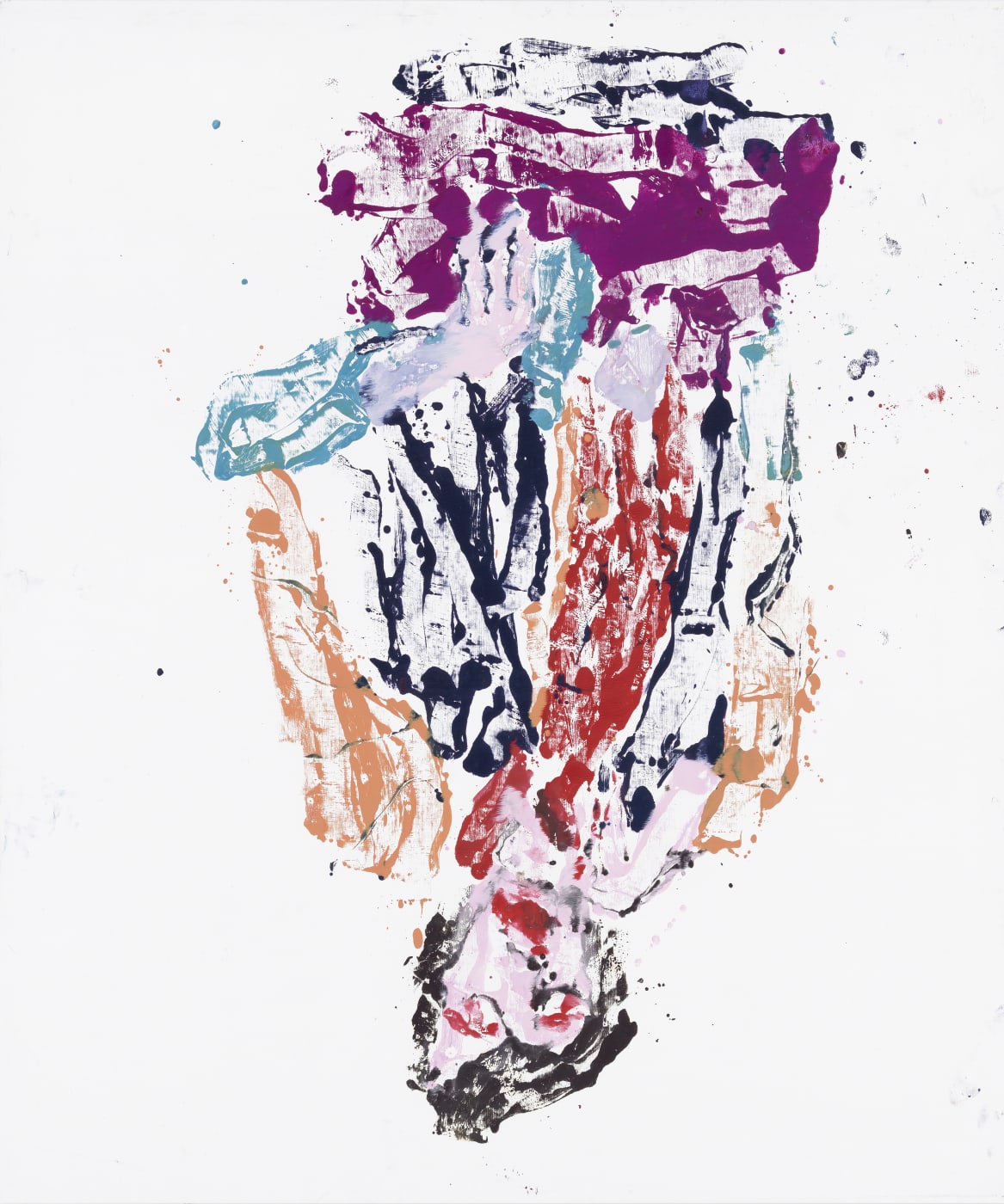
In several of his most recent works, Baselitz calls on touch. [...] As its seams, folds, and contours are visible, the work creates the sensation of a body covered with light drapery both stained and streaked. It would be tempting to trail one’s hand over these veils. — Philippe Dagen, art historian and critic
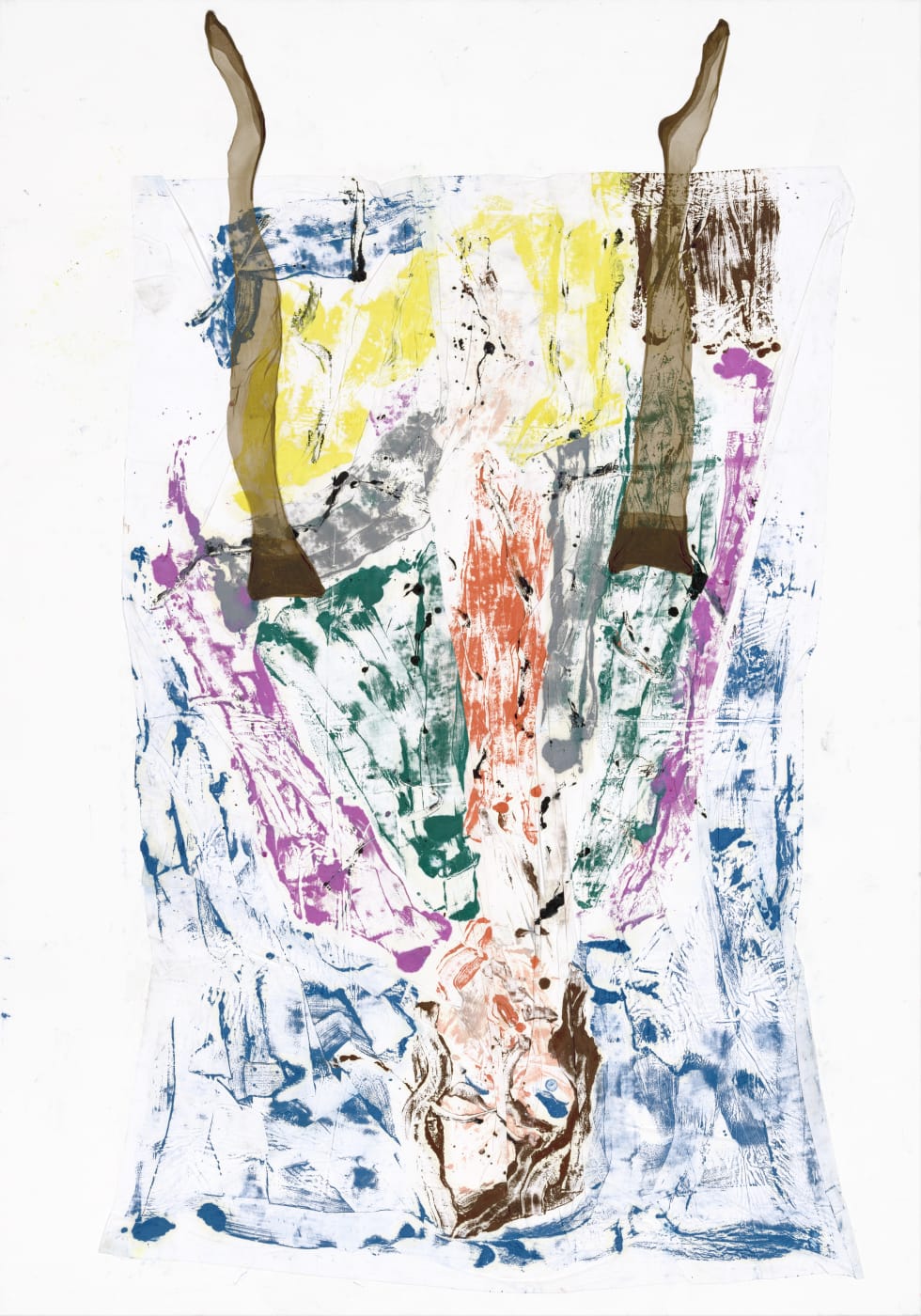
Baselitz takes his monotype technique a step further in his intensely chromatic portraits with stockings, transferring the figure of Elke onto a piece of fabric which he then affixes to the canvas. Allowing the creases of the fabric to mirror the delicate folds of skin, this unprecedented technique brings to mind the imprint left by Christ’s body on the Shroud of Turin. Impregnated with her form, the printed fabric implies an imagined contact with Elke’s body.
Das ist auch ein Weg, 2021Oil, dispersion adhesive, fabric and nylon stocking on canvas
300 x 210 cm (118.11 x 82.68 in)
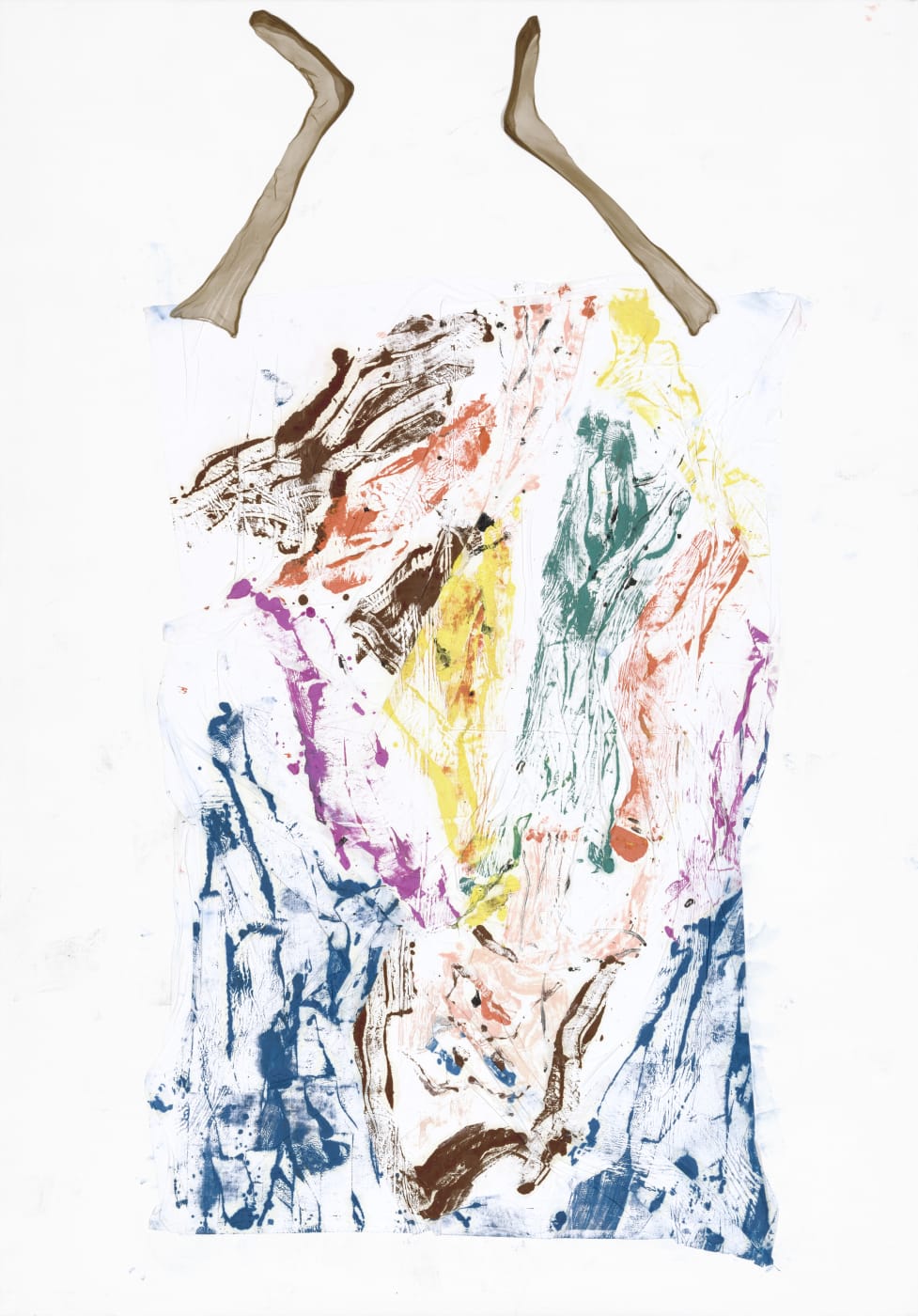


On these darker works, Baselitz transfers the same monotype figure twice in a composition that references Picasso’s L’Aubade. In this melancholy 1942 painting, Picasso took a sombre approach to the traditional female nude, which Baselitz alludes to in his own take on the theme. As Philippe Dagen writes, the first impression of the figure depletes the paint for the second impression, so that it is ‘stripped of a part of its substance, the second painting being like the ghost of the first’.
Die Gitarre schweigt, 2021
Oil on canvas
300 x 420 cm (118.11 x 165.35 in)
L'Aubade, 1942
Oil on canvas
Centre Pompidou, Paris, France
For Baselitz, painting is not an image and even less an image of an image – but the material manifestation of a presence.
— Philippe Dagen

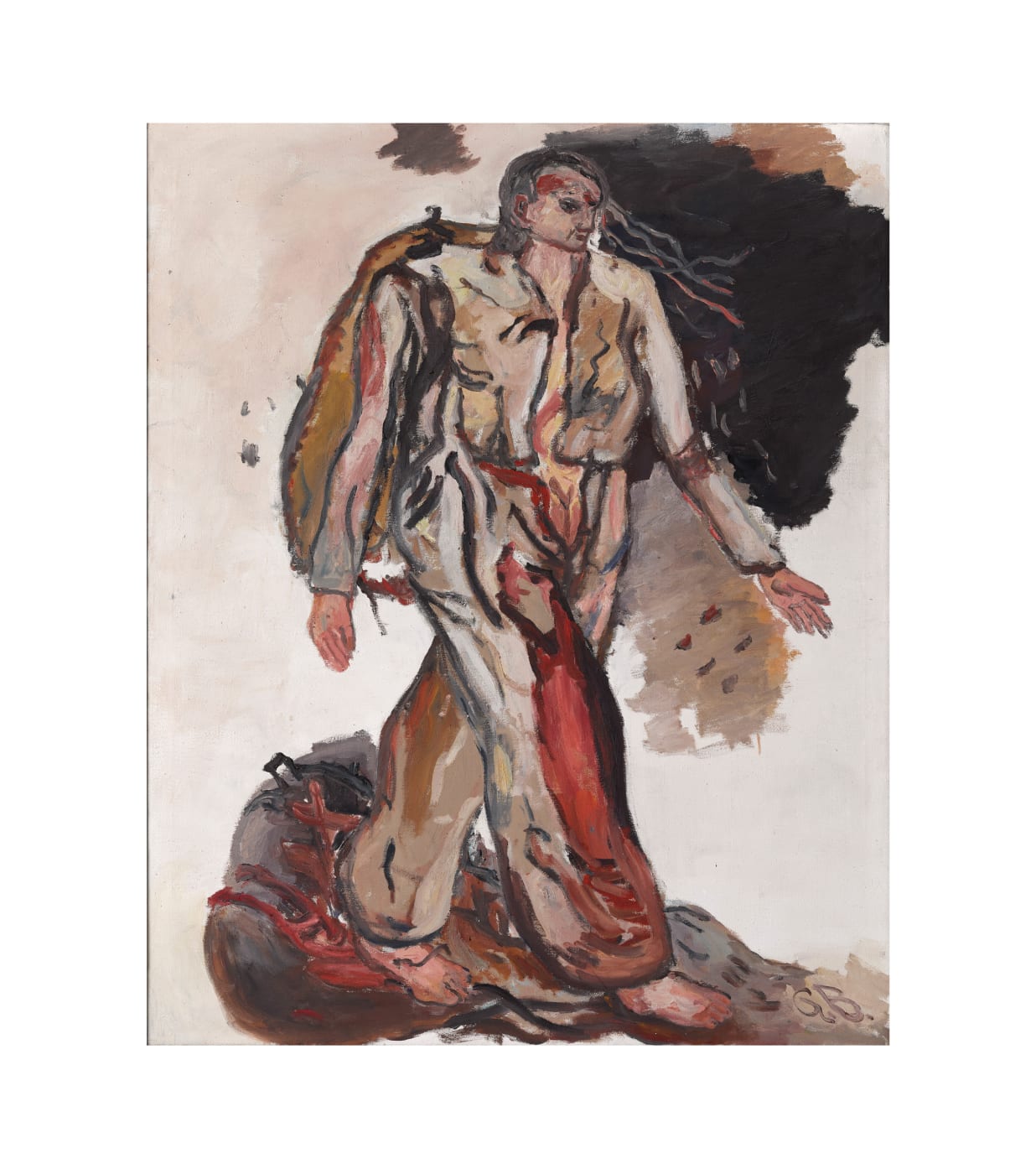
Bursts of working in intense colour are always matched in the artist’s practice by periods in which a more subdued palette dominates. This monumental self-portrait on an impenetrable background of black brushstrokes bears witness to this duality. The central silhouette is reminiscent of the artist’s celebrated Heroes series from the 1960s. The multiple stockings, in turn, recall the feet and legs that have been a recurring theme since the artist’s very early works.
Young man stockings, 2021
Oil, dispersion adhesive and nylon stockings on canvas
480 x 300 cm (188.98 x 118.11 in)
Oil on canvas
162 x 130 cm (63.78 x 51.18 in)
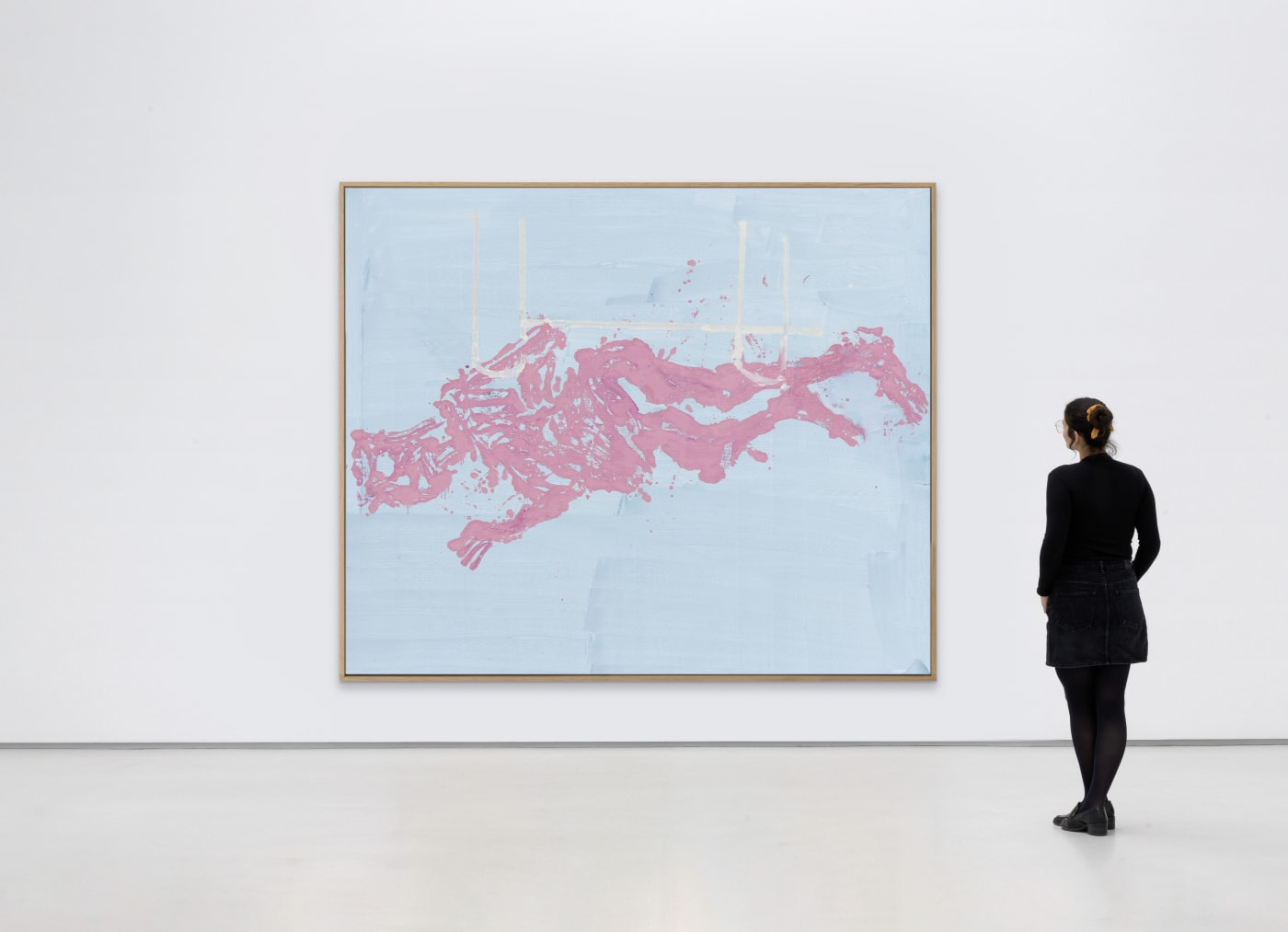
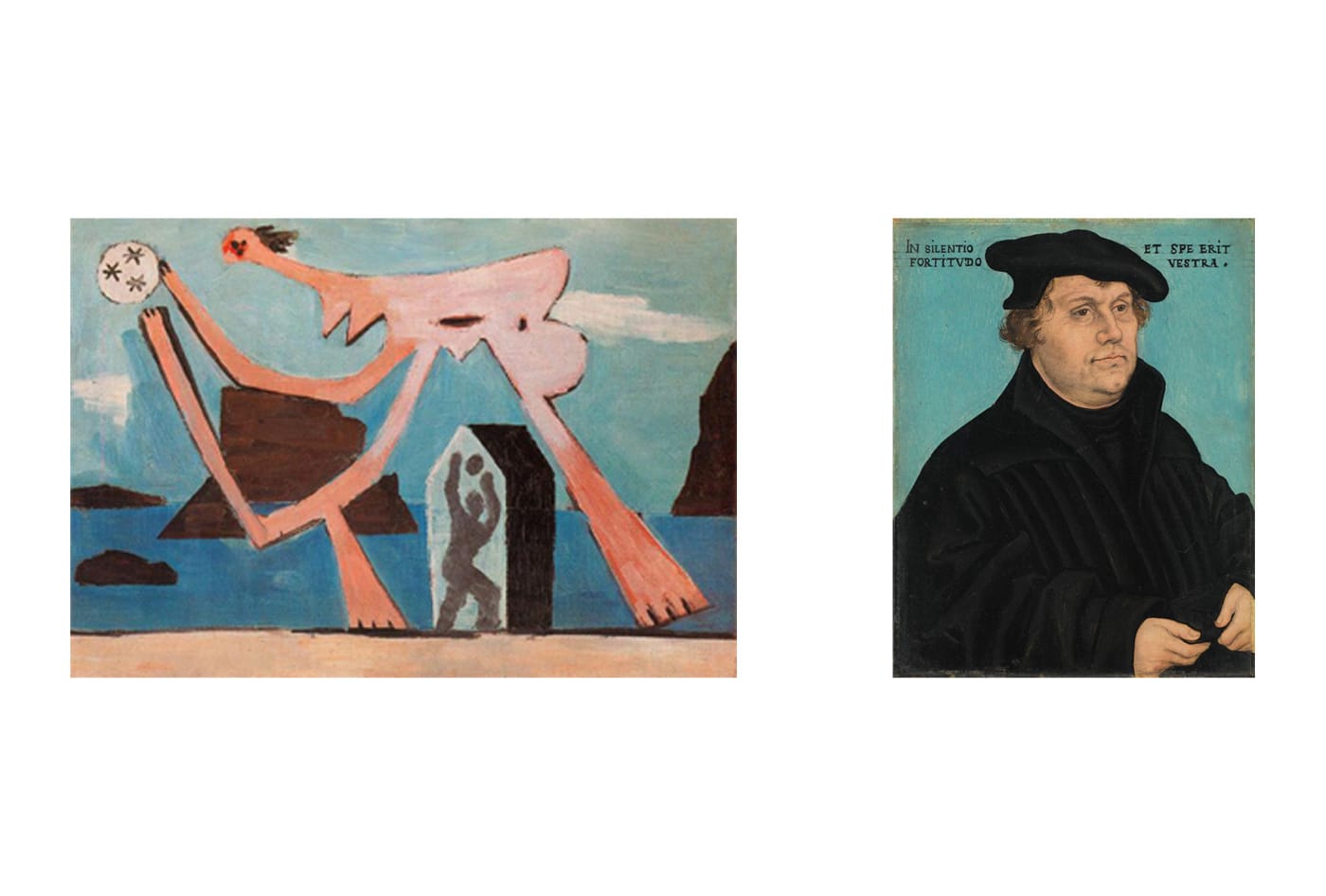
A group of paintings on a powder-blue ground evokes the blue backgrounds of German Renaissance painter Lucas Cranach the Elder’s portraits, as well as the cyan environments characteristic of Pablo Picasso’s Surrealist nudes from the 1920s and 30s, demonstrating Baselitz’s constant engagement with the history of painting.
Dinardblau, 2020
Oil on canvas
250 x 300 cm (98.43 x 118.11 in)
Pablo Picasso
Ballplayer on the Beach, 1928
Musée Picasso, Paris, France
Lucas Cranach the Elder
Bildnis Martin Luthers, 1532
Bayerische Staatsgemäldesammlungen, Munich, Germany
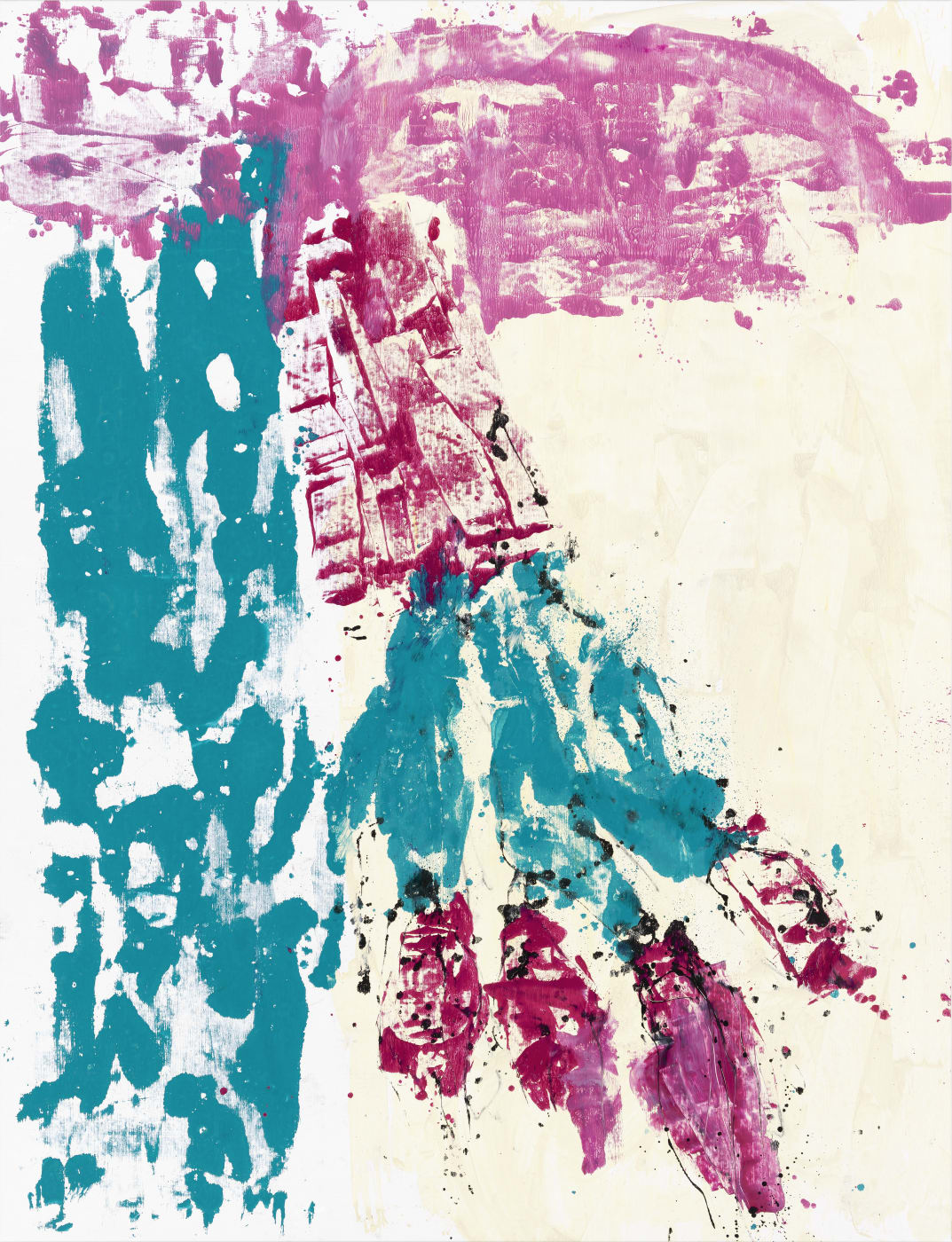
Since the early 2000s, Baselitz has been returning to the key phases and motifs of his own past oeuvre in a series of paintings known as Remix. The Tulips on view in the exhibition are a remix of the flowers he painted at the very beginning of the 1980s. In this group of works, the subject leans in from the left of the canvas to interact with the emptier right side to create a taut relationship between subject and background and a compositional equilibrium reminiscent of the balanced asymmetry of Piet Mondrian.
Gruß aus Holland, 2020Oil on canvas
300 x 230 cm (118.11 x 90.55 in)
